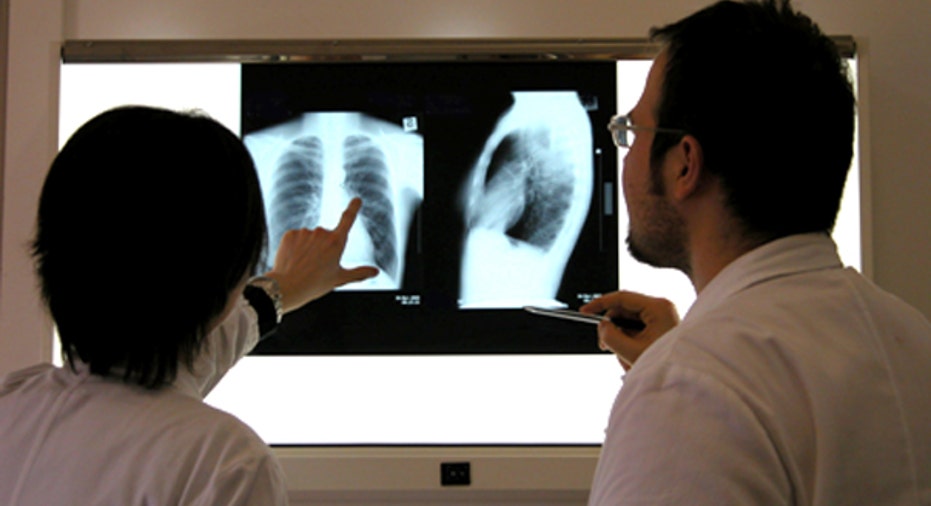Young and Healthy: The Risks of Remaining Uninsured

Why pay for something you don’t need, when you likely can’t afford it? That’s the motto of many young people choosing to live life without health insurance.
With nearly 19 million young adults currently not insured, according to Young Invincibles, a national organization advocating for 18-to-34-year olds, there’s a large coverage gap among generations.
But it’s hard to blame young people for not wanting to have health insurance coverage: it’s expensive, and they often don’t use the plan enough to make it cost effective.
The young and healthy likely spend a lot less time in doctor’s office waiting rooms, which is one major reason for this group opting out of paying for plans, says Dr. George Kikano from Family Medicine at University Hospitals Case Medical Center.
“Young people don’t have chronic conditions or the years of wear-and-tear that most senior people would get,” Kikano says. “But injuries can happen at school, jobs, you can fall off a roof—it becomes fairly expensive.”
Experts say multiple factors have contributed to the nationwide trend of those in the millennial generation (ages 18 to 31) opting not to purchase coverage, including a lack of employer sponsored plans, limited income and high unemployment rates.
But life is full of “what-ifs” and hypothetical risks can become major cost burdens in the blink of an eye, especially for the uninsured.
Why the Young Opt Out of Coverage
Many young people believe they are invincible, for better or for worse, says Michael Tanner, senior fellow Cato Institute.
“But they are not really invincible even though they think they are,” he says. “Bad things still happen to young people that they would not be able to afford absent insurance.”
The “what-if” situation isn’t enough to scare many into purchasing something they don’t 100% know they will need and use, he says. “The reason you have insurance on anything—your house, car, health—is because there are things that are extremely expensive if they do happen. A risk-neutral company is spreading this risk for a risk-averse individual.”
Jennifer Mishory, deputy director for Young Invincibles, also points out that coverage options from employers has decreased. Research from the organization and Demos found there was almost a 13% drop in access to employer-sponsored coverage among young adults between 1999 and 2000.
“That was one of the more traditional ways for young people to get coverage,” Mishory says. “Coupled with rising costs and the change in more young people working part-time or as independent contractors, there is less availability.”
With that said, one of the first mandates rolled out from the Affordable Care Act requires health insurers that offer dependent coverage to make it available until 26.
The Department of Health and Human Services declined to give an estimate on the number of uninsured adults, but says health-care reform has helped 6.6 million young people stay on their parents’ health plans, including 3.1 million people who are newly insured. The law is estimated to bring 30 million new people into the insurance pool.
While Obamacare rule has been in place since March 2010, many young adults have little-to-no knowledge of how the insurance system works, according to Mishory. For example, research by eHealth Insurance from 2009 found that only about 40% of college students could define a insurance deductible.
“We don’t really get a class in high school or college about what some of these terms mean and how to navigate the whole process,” she says. “If you are not actually going into the workforce because you can’t find a full-time job or an employer that offers insurance, this is just another barrier.”
What to Consider
Health insurance isn’t just about covering unexpected medical needs and costs, says Kikano, it should also be about preventative care.
“Young people still need vaccinations like the rest of us,” he says. “Those can be fairly expensive at around $200 a shot. Most chronic diseases like heart attacks cancer diabetes can be screened for at an early age, which brings an early diagnosis.”
People without insurance end up paying the highest costs for treatments and tests, he says.
Young people also visit emergency rooms more frequently, according to Mishory, pointing to recent research from the University of Southern California that finds those between the ages 18-to-25 visit the ER due to accidents and unintended injury more than any other age group under age 75. Without insurance, even a short stay can bring a massive bill.
“This can be financially devastating if you don’t have coverage, or savings,” Mishory says. “That is the other issue; young people are less likely to have these savings because they are just starting out.”
The Obamacare Conundrum
Tanner says the new law won’t do much to entice young and healthy people into the insurance pool, although the reform is banking on this group buying insurance to offset the costs of older—and more costly—Americans.
“The new law works against the basic context of insurance,” Tanner says. “Young people will have to pay much more than the actuarial value under the new policy.”
Instead of dishing out thousands of dollars each year for premiums, some young healthy people may feel they are better off just stashing that cash away for a worst-case scenario, or, more likely, risking it.
But those on the lower level of the income spectrum may benefit from the law’s much-discussed subsidies, according to Mishory because Medicaid coverage is expanding significantly to childless young adults, reducing cost barriers to insurance.
“You might be working or going to a community college, bringing in about $17,000 a year with student loans—which is not an uncommon scenario—you will have access to a significant tax credit,” she says.
However, because those with pre-existing conditions cannot be discriminated against when it comes to cost, young people will likely wait until they actually need it to purchase coverage, Tanner says.
“You can wait until you actually come down with cancer, and the cost will be the same,” he says.



















